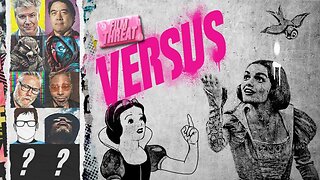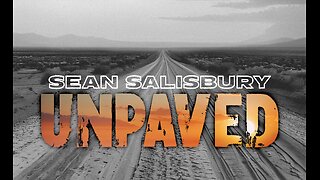Premium Only Content

Animal funny🤣
Over the last few weeks, I have seen a large number of animal videos on my social media feeds, and questions about how to write video descriptions for animal videos on social media. From penguins wandering around an aquarium to people’s dogs smiling at the camera, I love that more and more accounts are sharing adorable animal content, even though many of these videos are difficult for me to see with low vision. Here are my tips for how to write video descriptions for animal videos on social media for blind and visually impaired audiences.
REASONS TO DESCRIBE ANIMAL VIDEOS ON SOCIAL MEDIA
There are many benefits to adding video descriptions for animal videos for audiences who are blind or that have low vision, as well as people who have normal sight. Some of these benefits include:
Many videos of animals that are being posted right now are in less-than-ideal lighting conditions so it can be more difficult to see them in a video
Other animals may blend into the background or be difficult to track, so knowing how they move is helpful
While captions often provide some information on a video, they do not explicitly describe what is happening
Some videos do not have any animal audio or it is difficult to figure out what is going on in a video based on audio alone
For people who have a phobia of certain animals and have the species name listed as a muted word, having the species name listed in a video description can help someone avoid seeing a video of an animal that they do not want to see, especially if this isn’t mentioned in the original post
Animals can be difficult to identify, so having the species name listed or other descriptive information can help a user better imagine what the animal looks like
People and organizations are posting a ton of animal videos right now, and people with visual impairments want to see your cute animal videos too!
WHAT IS VIDEO DESCRIPTION?
In this context, video description is a text-based description of a short video that is posted on a social media platform such as Instagram, Twitter, Facebook, Tumblr, TikTok, or a similar platform. I think of video descriptions of being the equivalent of alt text for videos, as they describe visual information for audiences that might not be able to see it otherwise. However, unlike alt text, video descriptions can be read by anyone, even if they aren’t using assistive technology.
RELATED LINKS
How To Write Alt Text For Gifs
How To Add Alt Text On Social Media
How To Write Video Descriptions For TikTok
How To Write Alt Text and Image Descriptions For Instagram
How To Write Alt Text and Image Descriptions for the Visually Impaired
IS THERE A DIFFERENCE BETWEEN AUDIO DESCRIPTION AND VIDEO DESCRIPTION?
Audio description, sometimes referred to as descriptive audio or described video, is an additional narrator track that provides visual information for people who otherwise would not be able to see it. Audio description can be found in a variety of different places and content types, from YouTube videos to plays to amusement parks. While video description and audio description serve similar purposes for audiences who are visually impaired, video description is text-based and is not synchronized with the video. However, if users are interested in audio describing animal videos on YouTube, the free YouDescribe tool is an awesome resource for this.
RELATED LINKS
Fast Facts About Audio Description
How To Create Audio Description For YouTube With YouDescribe
Creating Audio Description For Viral Videos With YouDescribe
Using Audio Description at Dear Evan Hansen
How To Use Audio Description Devices at Disney World and Disneyland
WHAT TO DESCRIBE
Helpful things to include when writing video descriptions for animal videos on social media include:
Animal name and species/breed, i.e Fiona the Nile Hippo
Animal colors if they are unique/relevant, such as a red multicolored parrot or a black lab
How many animals are in the group, such as if there is a group of three Samoyed puppies running towards the camera
The setting/background if relevant, such as the name of the zoo or aquarium where this is being filmed
Relevant facial expressions, such as surprise or happiness
Any significant movement such as swimming or falling asleep on the floor
Interactions with other animals, people, or the camera, which can include an animal noticing the camera and swimming/running closer, or getting excited over watching other fish swim
RELATED LINKS
Benefits of Visiting Touch Tanks With Vision Impairment
WHAT NOT TO DESCRIBE
Unless it is relevant to the video, information to exclude when writing video descriptions for animal videos on social media include:
Over-describing what the species or animal looks like- many blind and visually impaired people have a mental model for what a giraffe looks like, so there is no need to describe that it has a long neck and spots. If the point of the video is to show off what the animal looks like and there is no audio/existing caption that shows what the animal looks like, including this information is ok.
Over-describing color- again, many blind and visually impaired people have a mental model for what color looks like if they do not have color vision or are otherwise colorblind, so there’s no need to describe what green looks like
Irrelevant items in the background, such as a stop sign or other items that are not important to the video
Timestamps for how long an animal does something- I don’t need to know that a lion ran for exactly seven seconds, but it is helpful to know that it ran across its enclosure to a watering hole
Random comments about the animal or information that is not relevant to the video
EXAMPLE VIDEO DESCRIPTIONS FOR ANIMAL VIDEOS
Some examples of video descriptions for animal videos I have seen on Twitter include:
An African penguin walking outside its enclosure approaches a beluga whale tank and watches the beluga swim in front of them as the beluga smiles and makes excited facial expressions
A museum volunteer shows off an amelanistic striped corn snake with vertical dark orange and light orange stripes and a yellow body that is about one meter long. The snake looks at the camera with its red eyes and sticks out its tongue several times
Piper the yellow lab notices her owner typing on the computer and puts her head in her owner’s lap and looks up at the camera
A male blue betta fish inside a small desktop aquarium swims up to the camera and turns to his side, showing off his red fins
A giant panda at the National Zoo holds bamboo in their paws and chews on the end while looking at the camera
Users do not need to write overly detailed or long descriptions, as these videos are often fairly short. I recommend keeping video descriptions to 280 characters or less, or about the length of a tweet.
WHERE TO ADD VIDEO DESCRIPTIONS ON SOCIAL MEDIA
Many users choose to add the description to the caption of their video if space allows, though adding it in the comment section is also a common practice. If the video description is in the comment section, make note of this within the caption. I also recommend writing the phrase “Video Description:” in front of the description so that users know what it is.
If posting on Twitter, I recommend quote-tweeting and adding the description at the top, or putting it in the replies of the tweet.
RELATED LINKS
Using Twitter With Vision Impairment
How To Write Alt Text For Memes
Tips For Using Social Media With Photosensitivity
FINAL THOUGHTS
I love watching animal videos on social media, and have been excited to see more and more animal videos on my social media feeds, as well as get videos of pets from my friends. I hope these tips for how to write video descriptions for animal videos on social media are helpful for others as well!
How To Write Video Descriptions For Animal Videos On Social Media. My tips for writing video descriptions for animal videos on social media for blind and visually impaired audiences
Filed Under: Alt Text, Audio Description, Design, Low Vision, Science and Math, Social Media
Tags: alt text, animals, audio description, science, social media, videos
HOW I CREATE CITATIONS FOR RESEARCH PAPERSTIPS FOR READING MUSIC ON AN IPAD WITH LOW VISION
SUBSCRIBE
Enter your email to follow Veronica With Four Eyes and get full text of new posts directly to your inbox. But be careful following me in real life, I run into
-
 DVR
DVR
Candace Show Podcast
1 hour agoStraight Husbands vs Ryan Reynolds | Tucker Carlson vs Brigitte Macron | Candace Ep 161
16.1K8 -
 1:19:24
1:19:24
vivafrei
4 hours agoBongino's Day 1 in the FBI! Swatting Frenzy? Carney & Macron Sitting in a Globalist Tree! & MORE!
80.1K58 -
 1:01:17
1:01:17
In The Litter Box w/ Jewels & Catturd
1 day agoTrump is our Lucky Charm | In the Litter Box w/ Jewels & Catturd – Ep. 763 – 3/17/2025
37.9K11 -
 15:24
15:24
Russell Brand
3 hours agoDan Crenshaw Addresses Tucker Carlson Beef
33.1K85 -
 LIVE
LIVE
Film Threat
23 hours agoVERSUS: THE SNOW WHITE STORM IS COMING | Film Threat Versus
403 watching -
 11:07
11:07
Silver Dragons
2 hours agoDid Gold REALLY Hit $3,000? How is the REAL Spot Price Determined?
3.9K3 -
 2:11:47
2:11:47
The Quartering
6 hours agoTrump & Putin Meet, Tesla Psycho's FAFO, Journo SMACKS Trump In Face, COVID BOMBSHELL & Moree
168K60 -
 1:16:41
1:16:41
Sean Unpaved
4 hours agoPayday In Cincinnati For Chase & Higgins; NCAA Madness Bracket Predictions!
21.1K1 -
 2:02:40
2:02:40
Right Side Broadcasting Network
7 hours agoLIVE REPLAY: White House Press Secretary Karoline Leavitt Holds a Press Briefing - 3/17/25
124K47 -
 1:09:42
1:09:42
Tucker Carlson
4 hours agoRick Sanchez: Fired and Threatened With Jail for Refusing to Spout Zelensky’s Talking Points
88K54